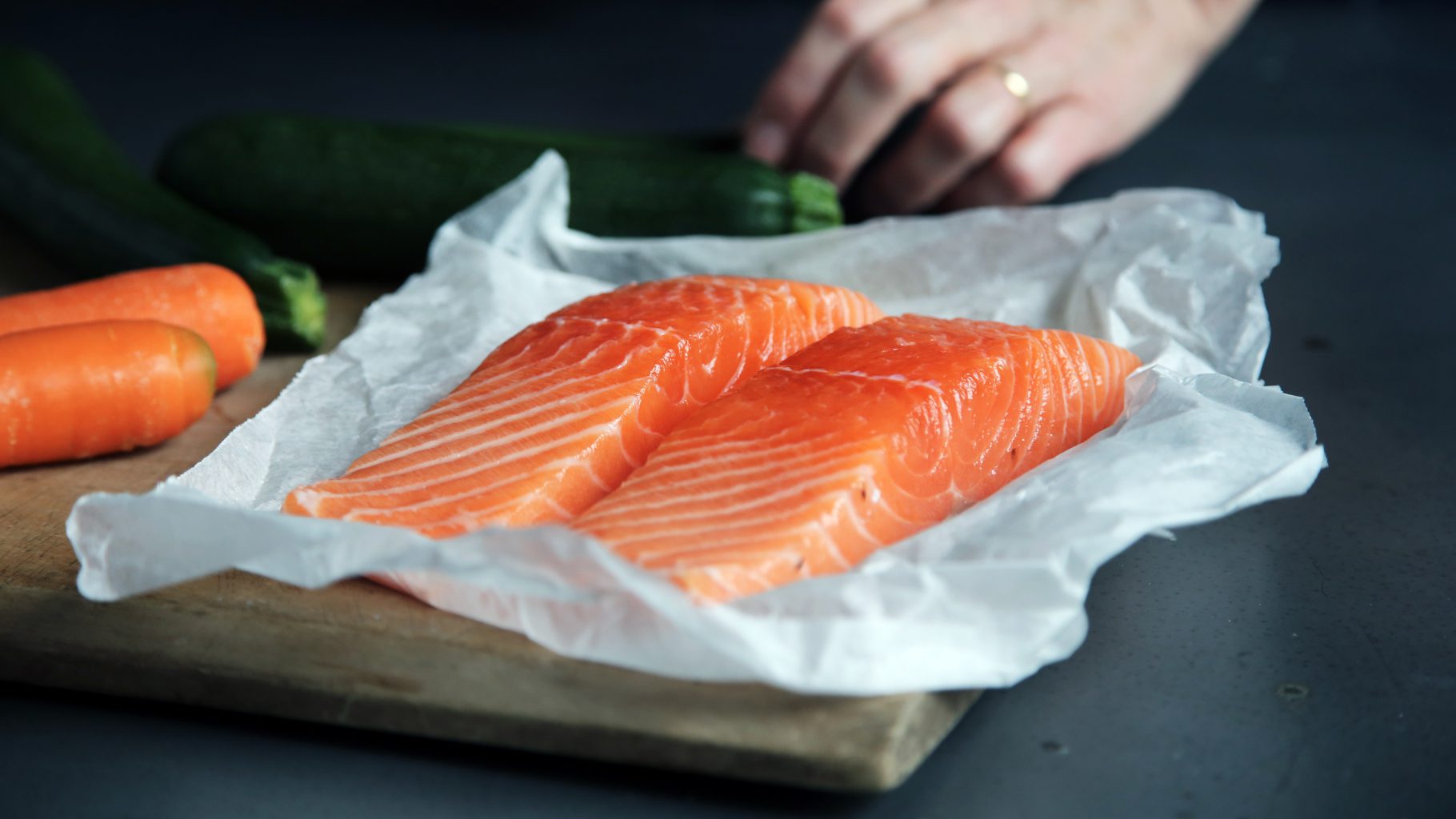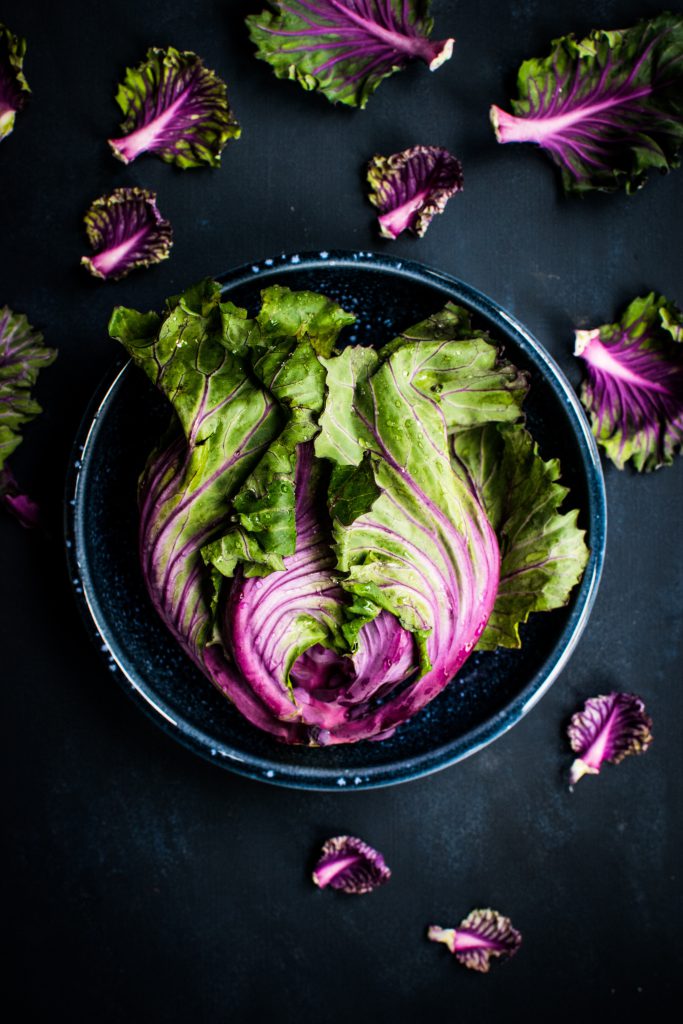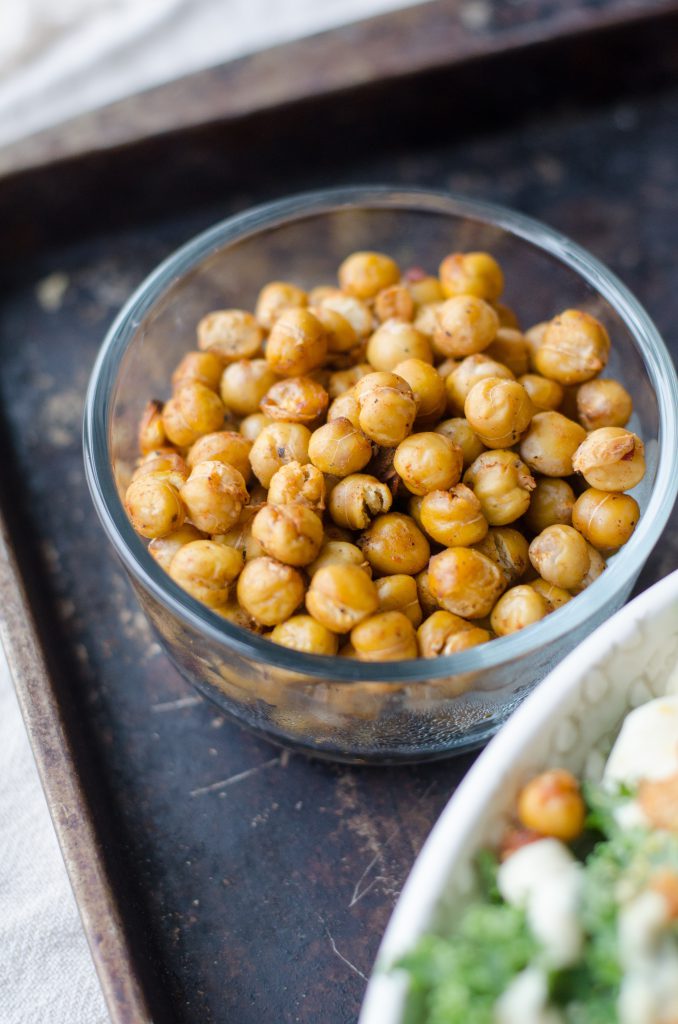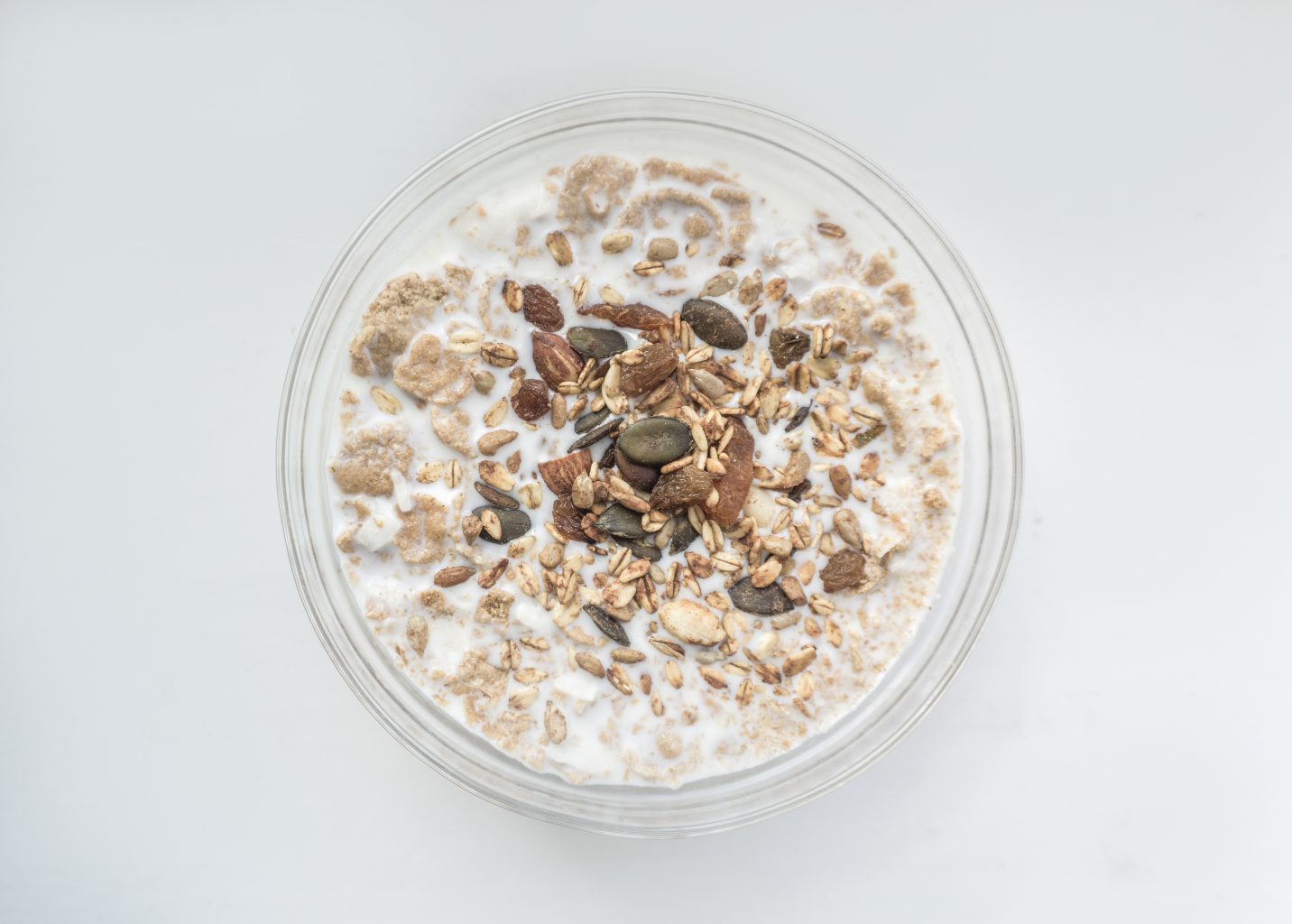One of the questions that seem to come up more and more lately is whether or not it is safe to follow a plant-based diet during pregnancy and how does it affect the protein needed for the baby.
Even though your body requires roughly 80,000 calories to ‘build’ a brand new human being, the most important thing is not the calories that you take in, but the quality, or the nutrition density of those calories.
Protein is a vital building block your body uses to create skin, muscle, hair, and bones. That’s why it’s crucial when you’re pregnant, both for your baby (to ensure normal growth and prevent low birth weight) and for you (to maintain your body’s tissue health). Proteins and amino acids are used for almost every metabolic process in the body. According to the World Health, around 6% of your daily calories during pregnancy should come from protein sources.
About 20% of the human body is made up of protein. As the human body doesn’t store protein, it’s important to get enough from your diet each day. You can get protein from many food sources, including plants and animals.
What Proteins Are Made Of?
Proteins in food are made of amino acids. Some amino acids, called nonessential amino acids, your body can make — while others, called essential amino acids, you have to get from your diet, because your body cannot make them. The nonessential amino acids include alanine, asparagine, aspartic acid and glutamic acid. Usually, amino acids such as arginine, cysteine, glutamine, glycine, ornithine, proline, serine and tyrosine are nonessential — except during periods of illness and stress. The nine essential amino acids are histidine, isoleucine, leucine, lycine, methionine, phenylalanine, threonine, tryptophan and valine.
Plant vs Animal Protein
Although up until recently it was believed that the source of the protein, whether animal or plant, doesn’t matter, the latest scientific research suggests that might not be the case. According to Harvard Medical School, “studies are confirming the health benefits of meat-free eating. Nowadays, plant-based eating is recognized as not only nutritionally sufficient but also as a way to reduce the risk for many chronic illnesses.”
Women who consume an excessive amount of animal protein tend to gain excessive weight during pregnancy, contributing to a host of complications like gestational diabetes, edema, and preeclampsia. According to an article published by the Columbia University School of Public Health, severe preeclampsia rates have risen dramatically in the US over the past 30 years right along with obesity rates. Complications due to preeclampsia are a leading contributing factor to the high rate of deliveries by Caesarean Section in Western countries. According to a research article published by the National Centre for Biotechnology Information, preeclampsia is virtually non-existent in vegan moms!
Benefits of Eating Vegetable Protein
Getting your protein from plant-based foods you’re more likely to have a lower intake of dietary cholesterol and unhealthy saturated fat. A 2010 review in “Nutrition in Clinical Practice” reports that individuals following vegetarian diets have lower body mass indexes, lower blood cholesterol levels and lower blood pressure than non-vegetarians. We need to eat foods that supply us with the nine essential amino acids that our bodies can’t make on their own. Some plant-based foods have all of them (quinoa, buckwheat, soy, chia, and hempseed) while others have a mix of some and not others. As long as foods like legumes, nuts, seeds, whole grains, fruits, and vegetables are consumed daily, you’re getting everything you need and more.
Why not animal protein?
Diets that rely heavily on animal protein are typically also much higher in saturated fat and cholesterol that contributes to cardiovascular disease. Even lean sources are still filled with additional hormones and antibiotics, as well as bacteria, parasites, and carcinogens.
Recommended Amounts
Regardless of the source of your dietary protein, your total daily protein needs are based on your gender, size and activity level. The RDA for protein is 71 grams daily during pregnancy and lactation, 46 grams per day for other women and 56 grams of protein daily for men, according to the Institute of Medicine. Physically active adults benefit from a daily consumption of up to 0.91 grams of protein per pound of their body weight, states the International Society of Sports Nutrition.
Plant proteins additionally offer antioxidants, fibre, minerals, vitamins and phytochemicals. Using quinoa as an example, 100 grams provides 14 grams of protein along with 25% of the RDA for both iron and vitamin B6 and almost 50% of the RDA for magnesium and 563 mg of potassium. The same measure of beef comes in at 26 grams of protein, and only 14% iron, 20% B6, 5% magnesium and 318 mg of potassium. It’s also double the fat at 15 grams with 90 mg of cholesterol, while quinoa has just 6 grams of fat and zero cholesterol.
Below are examples of some examples of healthy sources of plant-based protein and how to incorporate them into our diet.
Legumes
A wonderful low-calorie protein source. There are many ways to add protein-rich legumes such as beans, lentils, chickpeas or other legumes to your diet: add them to salads, stews and soups and other dishes. If you are trying to reduce your animal protein intake legumes make great patties and meat-less loaves.
Nuts and seeds
Peanuts, walnuts, cashews, pistachios, and almonds are all good sources of plant protein, with numbers ranging from 26 to 35 g per cup. Pumpkin seeds, sunflower seeds, and even sesame seeds are packed with protein, contributing 27 to 39 g per cup. And so are nut butters: A level tablespoon of peanut butter supplies 5 g of protein. Nuts and seeds, however, are best enjoyed in moderation as they are high in calories, a small handful or a quarter cup is the recommended serving size.
You can combine your favourite nuts and dried fruits to make a custom trail mix or add home honey and roast to make healthy protein bars Chopped nuts make an excellent substitute for croutons in salads or sprinkles on top of ice-cream. Nut butters add a creamy, rich flavour to sliced fruit such as an apple. Soaked chia seeds with some fruit make for an excellent morning porridge.
Grains
We normally think of grains as a source of carbohydrates, they, however, do contain protein as well. One cup of uncooked whole oats, amaranth, wheat or spelt kernels, quinoa, or wild rice all provide between 24 g and 26 g.
Substitute white rice with brown rice, or whole-wheat pasta instead of regular white flour pasta. For a healthier on tabbouleh, substitute bulgur wheat with quinoa. Add wheat-germ flakes to baked good- a quarter cup of wheat germ for an equal amount of flour in any recipe.
Won’t you crave meat while pregnant?
No one can predict what cravings we might have during pregnancy. It is, however, reasonable to expect that as eating pattern to change over time so do your palate and cravings. You may be pleasantly surprised that after switching to a plant-based diet, foods you previously enjoyed might no longer be the ones you now crave.
Is pregnancy a good time to make such a drastic change in your diet?
According to the Academy of Nutrition and Dietetics, “Well-designed vegetarian diets that may include fortified foods or supplements meet current nutrient recommendations and are appropriate for all stages of the life cycle, including pregnancy, lactation, infancy, childhood, and adolescence.” The choice to switch to a plant-based diet is usually based on an interest in reaping the health benefits for mom and baby.
Plant-based benefits for your child’s health after birth.
The Physician’s Committee for Responsible (PCRM) reminds us of many ways a plant-based diet can benefit children:
- Plant foods are optimal for kids, containing essential vitamins, minerals, and antioxidants.
- Kids who grow up eating plants are more likely to continue such through adulthood.
- Long-term advantages of plant-based eating include lower blood pressure, lower cholesterol, lower risk of developing cancers and heart disease, and lower risk for obesity.
Below you can find some recipes for plant-based protein-packed meals that are both healthy and delicious.
NUT AND FRUIT PROTEIN BARS
Prep time: 5 mins
Cook time: 20 mins
Total time: 25 mins
These Nut and Oatmeal Protein Bars are loaded with natural healthy ingredients are sure to become your newest addiction. Gluten-Free and Delicious.
Ingredients:
- 2 cups rolled oats (you can use gluten-free if needed)
- 1 cup Almonds
- ½ cup Pumpkin Seeds
- ½ cup Sunflower Seeds
- ¼ cup Hemp Hearts (optional)
- ½ cup Pistachio nut (chopped, shell removed)
- 2/3 cup Puffed Rice Cereal
- 2/3 cup Cranberries, dried
- 2/3 cup Apples, dried (chopped)
- Zest of 1 lemon
- 3-4 Tbsp Raw Honey
- 1 Tbsp coconut oil
Instructions:
Line a baking tray with Parchment paper and lightly grease with coconut oil.
In a large mixing bowl, add almonds, pumpkin seeds, sunflower seeds, hemp hearts, pistachio nuts, puffed rice cereal, cranberries and apples and lemon zest, toss to combine. Set aside.
Stir brown rice syrup and honey together in a small saucepan. Heat over medium-high heat until boiling, stirring occasionally. Then let the sauce boil for 4-5 minutes. (The sauce will bubble up quite a bit, so keep an eye on it.) Once it’s ready, pour it evenly over the nut and fruit mixture and very quickly stir the mixture until it is evenly coated with the sauce. Beware, as it hardens quickly, so you’ll need to move fast!
Quickly transfer the mixture to the lined baking dish and press it firmly into the dish in an even layer. (you can use another baking tray to help press the mixture down into the pan.) Bake for 15-20 minutes or until the edges are starting to turn golden.
Let the bars cool for 30 minutes or until they reach room temperature. Then carefully lift up the parchment paper from the baking dish and transfer it (with the bars) to a cutting board. Cut the bars into your desired shapes and sizes. Then place in a sealed container and store at room temperature until ready to eat.
The bars will last up to 10 days. Or if you freeze them, they will last up to 3 months.
HEMP HEART CLEAN GREEN SMOOTHIE
Prep time: 10 minutes
Healthy Hemp Heart Clean Green Smoothie is perfect to get you on track to a healthy lifestyle. Gluten free, dairy free and sugar-free.
Ingredients:
- 1 cup fresh strawberries (washed & cut)
- 1 apple (washed, cored and skin on)
- 1 big handful of fresh spinach
- 2-3 Tbsp hemp hearts
- 1 cup cold water
- 1 cup ice
Instructions:
Place all ingredients into a blender. Blitz until smooth. Enjoy fresh.
CHIA CHOCOLATE PORRIDGE
Prep time: 20 minutes
Nutritious and delicious, my favourite porridge.
Can be used as a smoothie if you omit the chia gel.
Ingredients for the smoothie:
- 1/4 cup hemp hearts
- 1 small avocado
- 1 ripe banana (frozen, if desired)
- 2/3 cup milk/ coconut milk/ almond milk (your choice)
- 1 ½ Tbsp. cocoa powder (
- 1 Tbsp. agave/honey
- 3-5 ice cubes
Chia Gel:
2-3 Tbsp Chia Seeds
1/8 cup Water
Instructions:
Place all smoothie ingredients in a blender and blend until smooth, adding more milk if desired.
Taste and adjust if necessary (i.e. more agave/honey for sweetness, etc.)
Chia gel preparation: in a bowl combine chia seeds and water set aside for 20 minutes, to allow chia seeds to absorb the water and become gelatinous, stir from time to time.
Combine smoothie and chia gel.
SPICY QUINOA AND BLACK BEANS
This easy, one-pot, vegan-friendly dish is sure to satisfy anyone who loves bold flavour! Nutrient-rich, protein-packed: grains beans and vegetables make for a healthy, hearty meal.
Prep time: 10 mins
Cook time: 30 mins
Total time: 40 mins
Ingredients:
- 1 onion, finely diced
- 1 red bell pepper, finely diced
- 2 cloves garlic, minced
- 1 tablespoon olive oil
- 3/4 cup quinoa
- 1 heaping teaspoon cumin
- 1/4 teaspoon cayenne pepper
- salt and pepper, to taste
- 5 cups vegetable or chicken broth (water can also be substituted in a pinch!)
- 1 cup frozen corn
- 3 cups cooked black beans, drained and rinsed (or two cans)
- 1/2 cup chopped fresh cilantro
- Lime wedges for serving
Instructions:
In a large pot, sauté the onion and bell pepper in olive oil over medium-high heat until browned (approximately 5 minutes). Add garlic; sauté for a further one minute. Add quinoa, cumin, cayenne pepper, salt, and pepper; stir to coat. Add vegetable or chicken broth, stir, bring to a boil, and cover. Turn heat to low and simmer for approximately 20 minutes, or until quinoa is cooked. Add frozen corn, black beans, and cilantro; continue cooking on low heat until beans and corn are heated through (approximately 5 minutes). Serve with lime wedges.
This article was written by a Guest blogger – Mary Comerce – Health Coach and Owner of www.thehealthcoach.academy.







29 comments
Industrial copper dismantling Copper strip recycling Copper scrap storage practices
Copper scrap export and trade Copper scrap cost efficiency Copper sulfate recycling
Scrap copper transportation Copper scrap disposal Copper hydroxide recycling
Scrap aluminium grading system Aluminium scrap import duties Scrap aluminium legal compliance
Metal recovery solutions center Ferrous material ecosystem preservation Iron scrap yard
Ferrous metal recycling and reclamation, Scrap iron removal, Scrap metal facility
Metal waste reclamation methodologies Ferrous material recycling facilities Iron repurposing center
Ferrous scrap industry standards, Iron scrap reprocessing solutions, Metal waste reclaiming
Scrap metal purchasing Scrap aluminium sustainable development Aluminium scrap anodizing
Metal scrap processing efficiency, Aluminum cable scrap exporters, Scrap metal procurement
Metal scrap market forecasting Aluminium recycling public outreach Scrap aluminium environmental stewardship
Industrial scrap metal recycling, Aluminum cable scrap recycling regulations, Metal scrap reclamation and reuse
Scrap metal inspection services Ferrous material circular economy Iron waste recovery
Ferrous material inventory, Iron waste reclaiming, Scrap metal disposal regulations
Metal recycling operations Scrap aluminium market forecast Aluminium scrap value addition
Metal reuse solutions, Aluminum cable scrap environmental impact, Scrap metal reclaiming and reuse
Scrap metal documentation Ferrous material recovery centers Iron scraps reprocessing
Ferrous material recycling stakeholder engagement, Iron scrap reclamation services, Metal recovery
Metal waste decommissioning Aluminium scrap segregation Aluminium scrap auditing
Scrap metal procurement firm, Aluminum cable disposal, Metal retrieval
Scrap metal depots Ferrous metal balers Iron reclaiming operations
Ferrous material recovery system, Iron scrap reclaimer, Scrap metal sustainability
Scrap metal recovery center Aluminium recycling market expansion Aluminum scrap recycling process
Metal recycling and recovery, Aluminum alloy cables, Metal reclamation and salvage
Metal waste collection Ferrous material recycling environmental compliance Iron scrap reclamation operations
Ferrous material business management, Iron reclamation plant, Scrap metal recycling methodologies
Scrap metal repurposing technologies Aluminium recycling technology Aluminium scrap demand analysis
Scrap metal recapturing, Aluminum cable scrap market, Metal waste disposal regulations
Metal waste reclaiming and reprocessing Ferrous material recycling industry trends Iron scrap compaction
Ferrous material community engagement, Iron waste reclamation yard, Metal pricing services
Metal recycling plant Aluminum scrap market analysis Aluminium recycling value chain
Scrap metal recovery and reclaiming yard, Aluminum cable scrap recycling prices, Metal recycling depot
Global metal commodity trade Ferrous material sterilization Iron scrap remanufacturing
Ferrous material efficiency, Iron scrap recovery yard, Scrap metal recycling technologies
Scrap metal warehousing Scrap aluminium conversion Scrap aluminium collection center
Sustainable metal recovery practices, Melting and refining processes for aluminum cable scrap, Metal waste reclamation centers
Copper scrap recycling procedures Copper strip recycling Copper profile recycling
Metal waste recuperation, Expanded copper recycling, Metal reclaiming and repurposing services
Copper recycling legislation Copper is an important metal that has been used for thousands of years. Its excellent electrical conductivity, thermal conductivity, and resistance to corrosion and wear make it an ideal choice for a wide range of applications. Here are some of the most common uses of copper: 1. Electrical wiring and applications – Copper is one of the best electrical conductors, making it the preferred material for electrical wiring, transformers, motors, and other electrical equipment. It is also used for electrical connectors, circuit boards, and electronic components. 2. Plumbing and piping – Copper is a popular choice for water supply and heating systems because it is corrosion-resistant, durable, and easy to work with. It is commonly used for plumbing pipes, fittings, valves, and other components. 3. Architecture and construction – Copper is widely used in architecture and building construction due to its aesthetic appeal, durability, and low maintenance. It is used for roofing, gutters, flashing, and other decorative and structural elements. 4. Transportation – Copper is used extensively in the automotive and aerospace industries because it is strong, lightweight, and can conduct heat and electricity. It is used for engine components, radiators, and electrical wiring. 5. Cookware and kitchen utensils – Copper is an excellent heat conductor, making it an ideal material for cookware and kitchen utensils. It is used for pots, pans, kettles, and other cooking vessels. 6. Jewelry and decorative items – Copper is used in the production of jewelry and other decorative items due to its attractive color and durability. It is used for bracelets, necklaces, earrings, and other accessories. 7. Medical equipment – Copper is used in medical equipment such as X-ray machines and dental instruments because of its excellent conductivity and resistance to corrosion. Overall, the versatility of copper makes it an essential metal in various industries and applications Scrap metal smelting Copper scrap financing Copper alloy identification Copper scrap reuse Copper scrap trade policies Scrap metal export
Copper scrap disposal solutions Aluminum wiring and copper wiring have their own unique properties, advantages, and disadvantages. Aluminum wiring is cheaper than copper wiring, which makes it a popular choice for builders and contractors. It is also lightweight and has good thermal conductivity, which means it can handle a high amount of electrical current without overheating. However, aluminum wiring is not as ductile as copper and lacks the flexibility to be bent easily, which can make it more challenging to install. Additionally, aluminum wiring is more prone to oxidation and corrosion than copper, which can cause it to become loose over time. Loose connections can lead to electrical arcing, a dangerous condition that can create a fire hazard. For this reason, aluminum wiring is no longer used for residential electrical wiring in many countries. Copper wiring, on the other hand, is more durable and has better conductivity than aluminum wiring. It is less prone to oxidation and corrosion, which makes it a more reliable choice for long-term use. Its ductility also allows it to be easily shaped and installed in a wide variety of applications. However, copper wiring is more expensive than aluminum wiring and is a more significant investment for homeowners and builders. Copper is also a finite resource, which makes it less sustainable than aluminum wiring. In summary, both aluminum wiring and copper wiring have their unique advantages and disadvantages. The choice between the two will depend on a variety of factors such as application, cost, and availability. It is recommended to consult with a licensed electrician to determine the best wiring option for your specific project Metal waste reforming Copper scrap treatment Copper scrap market transparency Copper scrap dealer Copper scrap risk management Scrap metal salvage services
Copper scrap buyers Copper scrap material sourcing Scrap metal reclamation and recovery services
Copper cable scrap demand and supply, Scrap metal reclamation and processing, Copper scrap industry analysis
Metal recycling and reclaiming, Copper scrap public awareness, Copper cable recovery, Scrap metal community engagement
Scrap metal processing yard Scrap metal export procedures Iron recycling services
Ferrous waste, Iron scraps recycling, Metal recovery solutions
Metal scrap reuse Ferrous recycling services Iron scrap export procedures
Ferrous material social responsibility, Iron waste recovery center, Scrap metal value evaluation
Metal waste repurposing innovations Ferrous material public outreach Iron reclamation and recovery
Ferrous material trade restrictions, Iron waste reutilization services, Environmental metal recycling
Metal refuse reclamation Ferrous material accreditation Iron waste repurposing facilities
Ferrous material feasibility assessment, Iron scrap trade, Scrap metal recovery operations
Scrap metal industry news Ferrous material advertising campaign Iron scrapping facilities
Ferrous material collection logistics, Iron reclamation yard, Metal reclaiming and reclamation